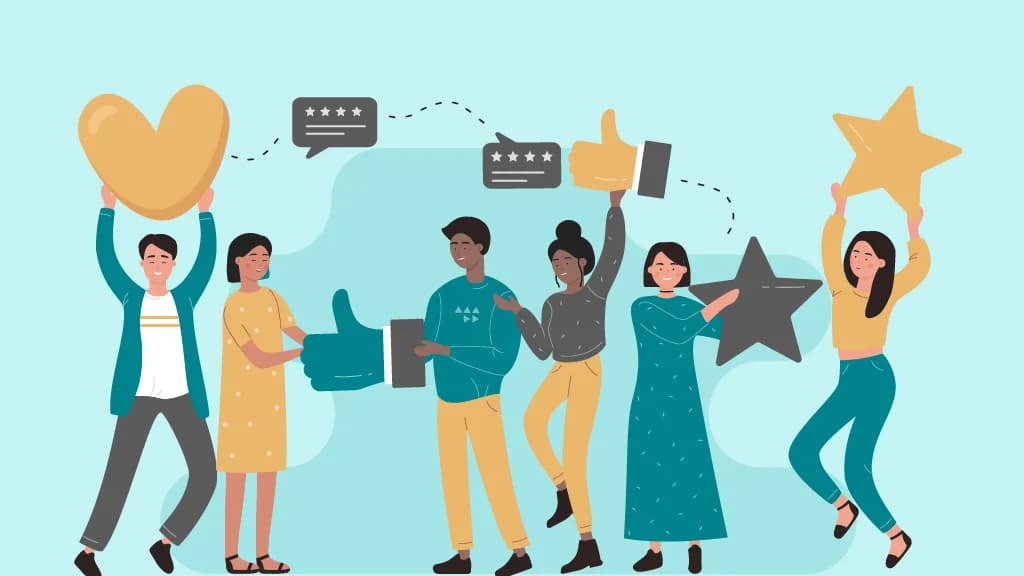
Internal communication is the backbone of a connected and engaged workplace. It involves more than just emails and announcements. But too often, companies rely on outdated, one-size-fits-all methods that don’t effectively reach employees. As a result, information gets lost, teams feel disconnected, and collaboration suffers. The upside is that a well-structured internal communications strategy can turn things around.
Authentic communication goes beyond simply giving updates; it is about creating an environment where employees feel acknowledged and appreciated. A modern Internal Communications Strategy (ICS) should be more than just memos and newsletters—it should actively engage employees, recognize their contributions, and create incentives that make them feel valued and motivated.
This is where AdvantageClub.ai digital recognition platform helps by making internal communication more interactive and practical. Organizations may strengthen connections, promote transparency, and collaborate more effectively by implementing recognition-driven communication and innovative engagement techniques. Companies can use the correct frameworks and templates to generate clear, engaging, and inclusive communication at all levels. There are six critical steps for developing a highly effective internal communications plan.
The Foundations of Internal Communications
What is Internal Communications?
The strategies, processes, and tools to share information and build a connected workplace come under internal communications. It includes everything from leadership messages and HR updates to peer-to-peer interactions and real-time employee recognition. Modern company communications extend beyond email and announcements. They emphasize genuine connection and interaction. An effective internal communications strategy keeps employees informed, engaged, and driven to contribute to the organization’s success.
AdvantageClub.ai’s digital recognition system helps streamline internal communications processes. AI-powered chatbots, smart notifications, and predictive analytics ensure employees receive essential information appropriately, enhancing internal communication efficacy. Companies integrating recognition-driven communication can improve collaboration and build a healthy work environment.
Types of Internal Communications
Companies use different types of effective internal communication methods to keep staff informed and aligned with the company’s goals. Here’s a breakdown of the primary forms of internal communications that every company should use:
Top-Down Communication
Leadership-driven communication ensures that employees receive critical information, company announcements, and strategic direction. While vital, it should not be a one-way street. Incorporate interactive features such as Q&A or town hall sessions to enhance engagement.
Bottom-Up Communication
Create trust and inclusivity by encouraging employees to express their ideas, opinions, and concerns. Employee surveys, open forums, and suggestion boxes are some tools that create opportunities for feedback, helping leadership make informed decisions.
Peer-to-Peer Communication
Seamless communication promotes teamwork and innovation. Whether through instant messaging, team meetings, or digital workplaces, allowing for easy peer-to-peer interactions improves professional relationships and efficiency.
Recognition and Engagement Communication
Appreciation is a sure-shot way to boost morale. Platforms like AdvantageClub.ai make recognizing achievements easy, offering rewards and creating a culture where employees feel valued and motivated.
Change Communication
Mergers, leadership changes, and cultural upheavals in the workplace can all be challenging to navigate. Transparent communication, regular updates, and directly addressing employee concerns all ease the transition and boost trust in the change.
A well-rounded internal communication strategy ensures that employees feel informed, heard, and motivated—key ingredients for a thriving workplace.
Traditional Internal Communications vs. AI-Powered Internal Communications
| Aspect | Traditional Internal Communications | AI-Powered Internal Communications |
|---|---|---|
Message Delivery | One-size-fits-all approach, static emails, and newsletters | Personalized, data-driven messages tailored to employee preferences |
Engagement Tracking | Limited to basic email open rates and surveys | Real-time engagement analytics, AI-driven sentiment analysis |
Feedback Mechanisms | Annual surveys, suggestion boxes | Continuous, AI-powered feedback loops with real-time pulse checks |
Recognition & Rewards | Manual processes, delayed recognition | Automated, real-time recognition with AI-driven insights |
| Accessibility | Desktop-based, limited mobile integration | Multi-platform, mobile-friendly, and chatbot-enabled communication |
Automation | Manual scheduling, repetitive content creation | AI-driven automation for scheduling, content personalization, and reminders |
Employee Experience | Passive, top-down communication | Interactive, dynamic, and engagement-focused internal communications |
| Adaptability | Slow to adapt to employee needs and engagement trends | Agile, AI-based adjustments based on real-time feedback and behavior |
Organizations transitioning from traditional communication methods to AI-powered internal communications can significantly improve employee engagement, productivity, and workplace culture.
6 Steps to an AI-Powered Internal Communications Strategy
Building an effective internal communications strategy isn’t about relying on a single approach. It’s about adapting, engaging, and using insights to strengthen connections across your organization. Here is a six-step AI-powered internal communications strategy to increase engagement, streamline communication procedures, and promote a dynamic, data-driven corporate culture. Here’s how to do it right:
Step 1: Leverage AI for a Data-Driven Communications Audit
Mistake:
Assuming your current approach works without AI-driven insights.
Traditional internal communication audits frequently use subjective comments rather than factual, real-time data. This can create blind spots in involvement, morale, and efficacy.
Solution:
Use AI Analytics to Conduct a Communication Health Check.
AI-powered analytics technologies can provide comprehensive insights into communication efficacy. It can also provide sentiment analysis and engagement trends, allowing firms to detect and rectify shortcomings proactively.
Plan of Action (PoA):
- AI-powered Sentiment analysis tools can evaluate employee feedback and emotions in communication.
- Use engagement analytics to track participation in recognition and incentive programs.
- Map findings to corporate objectives to connect internal communication tactics with company goals.
Step 2: Implement an AI-Optimized Internal Communications Framework
Mistake:
Treating communication as a one-size-fits-all model.
Workforce expectations change, calling for a dynamic communication framework.
Solution:
Create an AI-driven, adaptive communications strategy.
Personalization enabled by AI tailors communication to individual roles, preferences, and interaction history. This makes messages more effective and impactful.
Plan of Action (PoA):
- Categorize employees based on their behavior, interests, and engagement levels using AI technology.
- When integrated into the system, AI-powered chatbots and virtual assistants provide instant support and streamline information flow.
- Use predictive analytics to anticipate communication needs and provide timely and relevant updates.
Step 3: Enable AI-Driven Recognition & Engagement Platforms
Mistake:
Relying on outdated, passive communication channels.
Traditional technologies like emails and static intranet pages frequently result in alienation and lack of involvement.
Solution:
Use AI-powered recognition tools to increase real-time engagement.
AI-powered recognition tools improve internal communication by making it more dynamic, personalized, and engaging with real-time acknowledgments, gamification, and behavioral insights.
Plan of Action (PoA):
- Deploy an AI-powered rewards and recognition platform that connects with Slack, Microsoft Teams, and HRMS.
- Use AI-driven gamification techniques such as badges, leaderboards, and milestone-based prizes to encourage participation.
- AI-powered notifications can help you automate staff achievements and milestone celebrations.
Step 4: Personalize & Automate Internal Communications with AI
Mistake:
Sending one-size-fits-all generic messages.
Employees expect appropriate communication for their position, location, and work style.
Solution:
Utilize AI-driven personalization and automation.
AI may assess communication preferences, work routines, and previous encounters to guarantee that employees receive relevant and contextual information.
Plan of Action (PoA):
- Use AI-powered NLP technologies to assess communication trends and improve content distribution.
- Create personalized newsletters, notifications, and communications based on employee personas.
- Use AI chatbots to respond instantly to employee inquiries and ensure uniform delivery of information.
Step 5: Measure, Optimize & Evolve with AI-Driven Insights
Mistake:
Treating internal communication as a static strategy.
Internal communication efforts might become outdated and useless if they are not continuously measured and adapted.
Solution:
Use AI for continuous monitoring and optimization.
AI-powered analytics can monitor engagement data, forecast trends, and suggest improvements to keep communication initiatives current and effective.
Plan of Action (PoA):
- Define AI-driven KPIs, such as message open rates, response times, and engagement scores.
- Use AI to analyze sentiment and engagement trends, enabling proactive strategy adjustments.
- Continuously refine communication strategies based on AI-generated insights and predictive analytics.
Step 6: Foster an AI-Powered Culture of Recognition & Communication
Mistake:
Treating Recognition as a secondary element.
Recognition should be ingrained in an organization’s communication culture, not considered an afterthought.
Solution:
Use AI to integrate recognition into communication practices.
Companies can improve engagement, morale, and workplace culture by incorporating AI-powered recognition into daily communications.
Plan of Action (PoA):
- Train leaders and managers to use AI insights to recognize personnel successfully.
- Implement AI-powered peer recognition systems to encourage employees to acknowledge one another in real time.
- Align recognition initiatives with organizational principles, utilizing artificial intelligence to measure and promote positive behaviors.
The Future of Internal Communications is Engagement-Driven
Some of its main effects are meaningful connections, improved engagement, and making employees feel valued. Internal communications is not just about sharing information anymore. A strong internal communications strategy inspires participation and encourages collaboration.
Integrating rewards, recognition, and incentives into your internal communications strategy framework can transform everyday interactions into powerful tools for motivation and retention. With AdvantageClub.ai, organizations can seamlessly achieve this, making appreciation a natural part of workplace culture. Employees who feel valued are more engaged, productive, and committed to the company’s success.
The path to better communication is simple: Audit, strategize, implement, personalize, measure, and reinforce recognition. A well-structured internal communications strategy template helps businesses create a dynamic, responsive approach that keeps teams informed and inspired.
With the right tools and mindset, internal communication becomes a way to strengthen workplace culture, drive motivation, and boost long-term success. The key is to engage, recognize, and reward employees in ways that make them feel valued daily.






